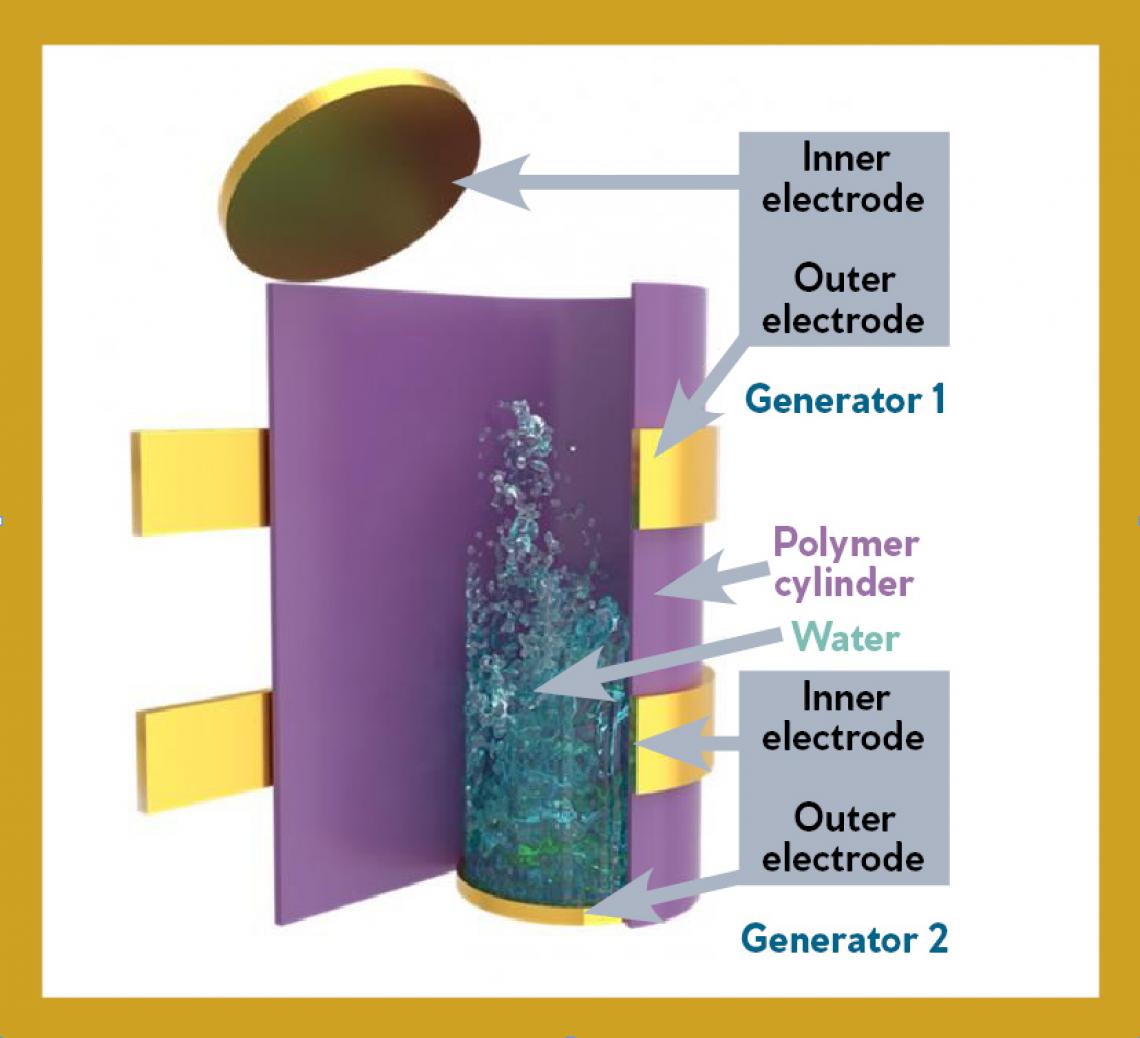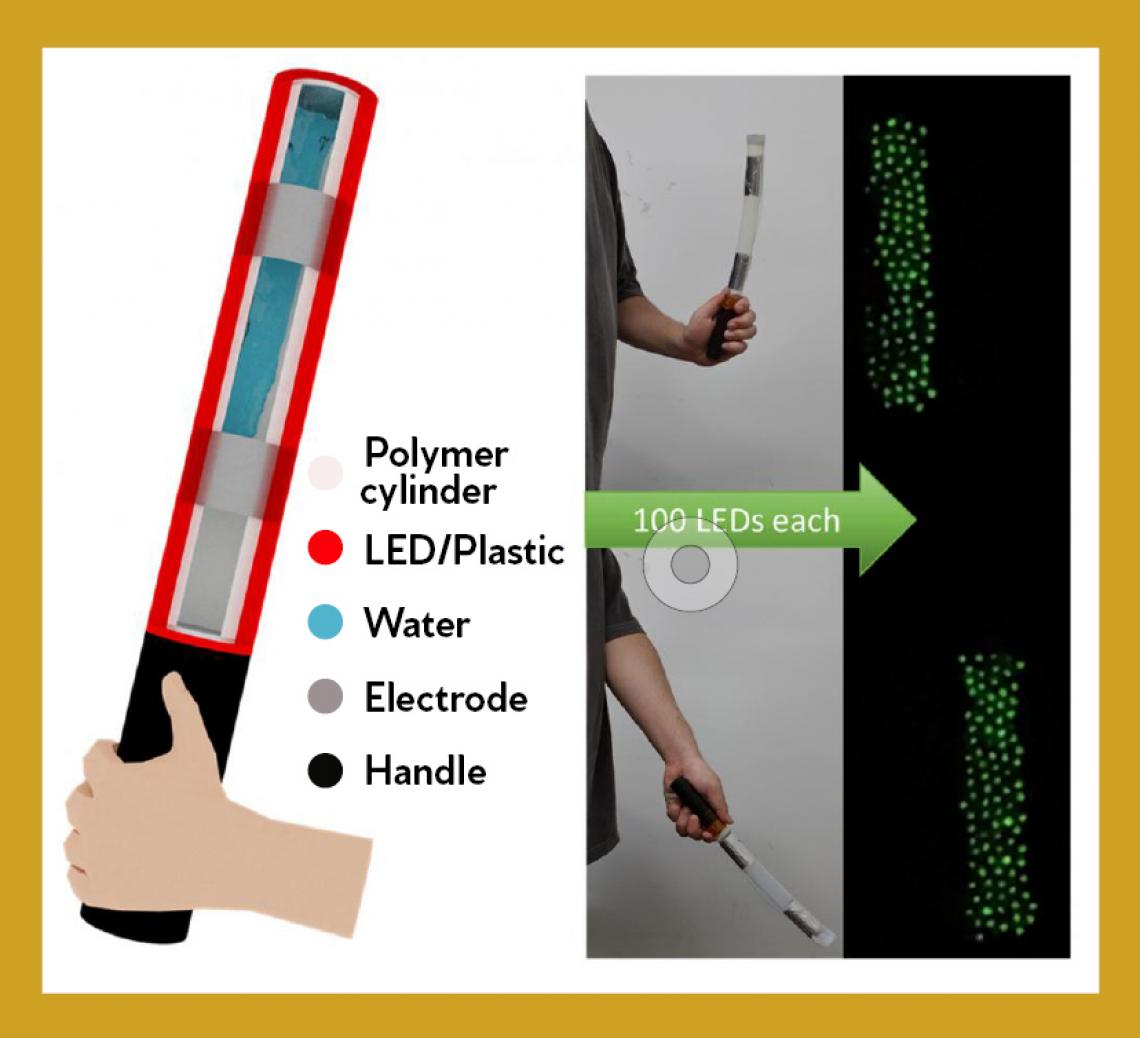This story is featured in the Asia Research News 2023 magazine. If you would like to receive regular research news, join our growing community.
Get the news in your inbox
A new stick-like, water-based device can convert energy from movement into electricity. The technology, which was reported in the journal Science and Technology of Advanced Materials, could be used to power portable devices, such as safety lights.
Growing interest in the Internet-ofthings and small electronics has created high demand for portable energy sources. One way to produce power is to harvest energy from the environment, such as thermal, solar or mechanical energy. To capture mechanical energy – the power an object gets from its position and motion – scientists have developed triboelectric nanogenerators, which can produce electricity through friction.
“Triboelectric nanogenerators are one of the most effective tools for harvesting mechanical energy because of their high electrical output, low cost and easy accessibility,” explains mechanical engineer Sangmin Lee of Chung-ang University in the Republic of Korea.
Triboelectric generators become electrically charged when two dissimilar materials touch and then separate. For example, when a balloon is rubbed on clothing, it becomes charged and can stick to things. However, friction between two materials inevitably causes damage, reducing device lifespan.
The device's simple design consists of 10ml of water, a polymer cylinder and electrodes.
Using liquids can reduce friction, but liquid-based generators have considerably lower electrical output compared to solid ones. There is also a trade-off between making the device large enough for the liquid to move and generate electricity, while also ensuring it is compact enough to be portable.
To overcome these problems, Lee and colleagues in South Korea and the US developed a lightweight, compact, water-based generator that can produce electrical power when shaken.
The device has a simple stick-like design and consists of 10ml of water, a polymer cylinder and electrodes. The container’s polymer material is negatively charged. The water moves up and down when the device is shaken, acquiring a positive charge that is transferred to the electrodes to generate a high electrical output.
“Because of its simple mechanism and design, this small, lightweight device could be used in everyday life. Electrical power can be produced simply by pouring water into the generator then giving it a shake,” explains Lee.
The nanogenerators can have a wide range of everyday applications. Here is an example of its use as a safety light baton.
The researchers tested different designs, changing the size of the electrodes, the physical space between them and the amount of water to determine the optimal combination. They found that the portable stick could generate a high electrical output, reaching 710 volts, when it had adequate space for water movement and a high electrode area.
The researchers showed that the generator can power 100 LED lights, meaning it could be used as a traffic safety light baton that illuminates when shaken. This study demonstrates the potential for triboelectric nanogenerators to be used for a wide range of everyday applications.
Further information
Prof Sangmin Lee
[email protected]
School of Mechanical Engineering
Chung-ang University, Republic of Korea
Dr Yasufumi Nakamichi
[email protected]
Science and Technology of Advanced Materials
National Institute for Materials Science
We welcome you to reproduce articles in Asia Research News 2023 provided appropriate credit is given to Asia Research News and the research institutions featured.






